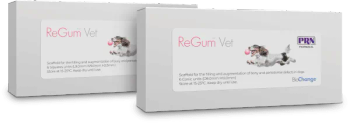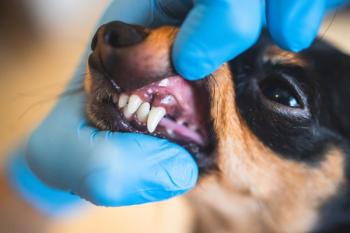
When the client objects to anesthesia for their pet
Reassure the client and get to yes on a veterinary dental procedure with tips from this script.
Photo courtesy of Sophie Moeller Calder via Facebook.
It's a fact: Performing a dental procedure well requires anesthesia. But this can cause more anxiety for pet owners than is justified. Address their every concern by following the script below.
Ms. Jones: I don't understand why you need to put my animal under to clean his teeth.
You: I realize that it may seem a bit weird to have to put Jaxx under anesthesia during a dental cleaning. However, it is necessary to ensure we can do a thorough job a evaluating his oral health, take dental x-rays and clean his teeth, both on the crowns and below the gumline.
Ms. Jones: But I don't need to be asleep for my dental cleanings.
You: True, but the difference is that he may not understand what we are doing and could become very agitated if we try to perform this procedure while he's awake. Veterinary dental work is ineffective-and can be dangerous to Jaxx and our staff-if done without anesthesia.
More client scripts
Swift script: Use this veterinary study to
10 tips for
Fresh inspiration for
Ms. Jones: So, it'll be safe for him?
You: I want to ensure you that we will do everything we can to mitigate the risk of anesthesia. We will perform surgical safety bloodwork prior to the procedure to ensure that Jaxx has no underlying health concerns and we use the safest medications possible. In fact, the anesthetics we use are the same medications often used in human medicine.
Ms. Jones: Will he feel any discomfort?
You: We'll ensure that Jaxx is sedated prior to the surgery to reduce any anxiety he may feel. And we'll keep him warm and comfortable during the procedure. Also, he'll be monitored by both electronic monitors and a dedicated and trained anesthetist.
Mr. Jones: But he's so old.
You: I know that's a concern. But, we will monitor his respiration, electrocardiogram, blood oxygen and carbon dioxide levels as well as his blood pressure. Monitoring him closely allows us to detect early signs of anesthetic problems when those problems can still be addressed. While there is always a risk with anesthesia, I would feel very comfortable if my own pet needed a dental procedure.
Newsletter
From exam room tips to practice management insights, get trusted veterinary news delivered straight to your inbox—subscribe to dvm360.






